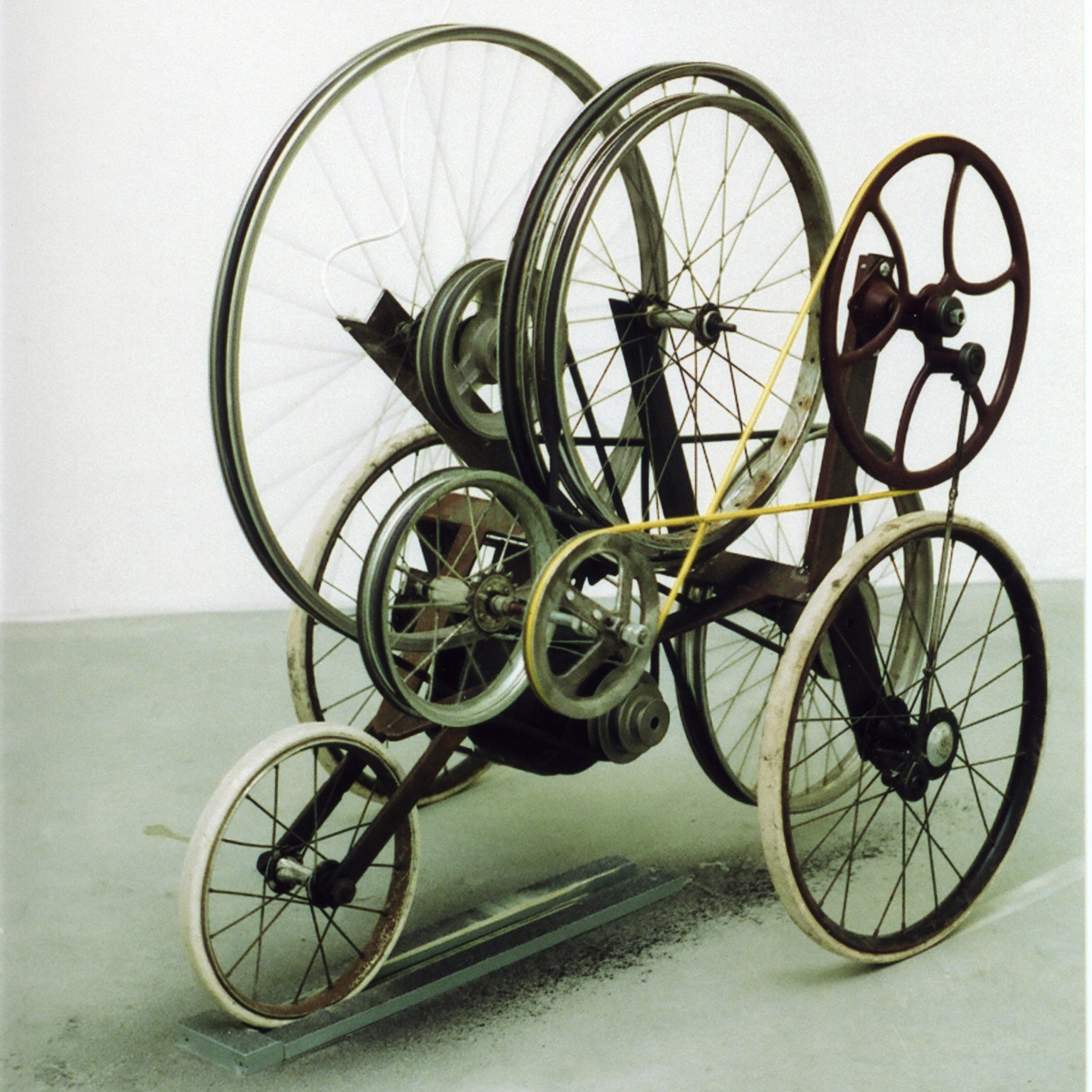Artists to pay respects to the revolutionary Marcel Duchamp in new exhibition
The exhibition, which opens this week, now features more than 50 artists, including Peter Blake, Keith Tyson, Gavin Turk, Michael Craig-Martin, Cornelia Parker and David Shrigley

When Marcel Duchamp placed a bicycle wheel on a wooden stool just over a hundred years ago, did he know exactly what he was setting spinning?
With Bicycle Wheel, he launched the concept of the “readymade” – an everyday object that is art because the artist says so. And then, four years later, created a “readymade” icon in Fountain, the urinal, laid on its back, regularly cited as the most important single artwork of the 20th century. The readymades are widely viewed as the birth of conceptual art. Yet given that, a century later, we’re still not done with the “but is it art?” question, it’s fair to say Duchamp’s provocations are still relevant, still vital.
Indeed, barely a conceptually challenging piece of work can be produced without it being declared “Duchampian”. Director of Contemporary Art at the Fine Art Society Kate Bryan was, however, struck by how it was always critics, collectors and catalogues that trumpeted Duchamp’s influence – not artists themselves.
"To understand his legacy, the only thing you can do is ask artists,” she says. “I strongly believe that every artist working today has had the opportunity to go through a door that Duchamp opened for them: working through problems about the role of the artist, what constitutes art. It’s all pretty unanswerable stuff, but it’s producing great results – we’ve got such a tradition of beautifully creative conceptual art in this country.”
So she set out to display this legacy by asking contemporary artists to produce a piece of work for a group show entitled What Marcel Duchamp Taught Me. Bryan’s hunch, that artists are indebted to Duchamp, turned out to be correct – people began ringing her up to ask if they could be a part of it. “In any artist’s studio today, there is a ghost of Duchamp in the corner,” she insists.

The exhibition, which opens this week, now features more than 50 artists, including Peter Blake, Keith Tyson, Gavin Turk, Michael Craig-Martin, Cornelia Parker and David Shrigley. And it marks a new direction for the Fine Art Society. The UK’s oldest commercial gallery, established in 1876, it is moving with the times: the top floor, which used to be the flat for the managing director, is now a space for contemporary art. Bryan, clearly a persuasive character, has pulled off a first in the Society’s history by opening up the entire building to the public for the exhibition, with the works strikingly positioned throughout it, from bin bags slouching in corners to a totem pole looming up the stairwell.
“Duchamp started making this stuff a hundred years ago – and this gallery, in so many ways, still represents that past,” says Bryan. The juxtaposition of the Victorian architecture and the ultra-contemporary pieces should, she suggests “make it easier to see how shocking [his] works must have been.”
We may no longer be shocked by readymades, but Duchamp’s playfulness and wit haven’t aged. And the artistic responses flaunt their own: there are cheeky homages, subversive portraits, conceptual jokes, and abundant references to Duchamp’s later love of ... chess. Light artist Chris Levine scanned one of Duchamp’s own chess pieces and turned it into a hologram; visitors will see it floating in the air “with unnerving realism” in one of the top rooms. What would Duchamp make of it? “I think he’d be turned on! He was looking for new experiences,” says Levine. “He broke the mould – art doesn’t have to be some rectangular thing that you stick on the wall. It’s how you respond to it that’s the point.”
Husband-and-wife team Rob and Nick Carter were also drawn to Duchamp’s enthusiasm for games. In 1924, he reckoned he’d come up with a way to defeat chance, by approaching roulette as if it were chess, and went off to Monte Carlo to test his theory in the casinos. “Unfortunately, I don’t think it worked,” says Rob. Their contribution, Red 23, is a roulette wheel – but a motorised one that never stops turning. It teasingly alludes not only to Duchamp’s readymades, but his failed gambling theories, his useless machines, and even his interest in erotic suspension: “unfulfilled sexual pleasure was something Duchamp touched on. It’s the anticipation – waiting for the ball to land, and it doesn’t; hopefully we leave the viewer wanting more,” says Nick.

While two thirds of the works were created for the show, some artists had already produced pieces that fit perfectly. Miriam Elia – a comedian turned artist – made a piece called I Fell in Love with a Conceptual Artist in 2011; it explicitly references not only Duchamp but another artist in the show, her ex-boyfriend Martin Creed. A spoof women’s-magazine spread, it tells of Elia’s heartbreak after Creed dumped her, with art-world in-jokes about lightbulb moments and how everything just felt so “meaningless” (just like conceptual art…).
She was understandably nervous about it being shown alongside Creed’s Work #869 (a crumpled piece of paper), but decided that the whole scenario is pretty funny – rather Duchampian, in fact. “I like [Duchamp’s] sense of humour,” she says. But there’s criticism wrapped up in her joke, too. “Duchamp made meaningless jokes you couldn’t decipher. I’ve taken both his work and Martin Creed’s and forced them into a story which gives them meaning, I suppose – it’s a question mark on that philosophy of things being meaningless.”
There is plenty of meaninglessness – and questioning of it – in the show. Nik Ramage describes his 2001 piece Back and Forth, for instance, as a “useless machine, trapped by its own pointlessness.” A motor propels a series of wheels and cogs, and his contraption shunts back and forth on the spot; made with bicycle wheels, it’s deeply Duchampian.
Not that that was a conscious drive: “I’ve never made a homage – or maybe I have but I didn’t mean to!” laughs Ramage, acknowledging that Duchamp’s influence is everywhere. “I use found objects and they’re very much descendants of the readymades – not everything [in art] is fashioned out of a block of stone or tube of paint.”
In the catalogue for the show, Bryan says what Duchamp taught her was to re-ask the fundamental question, “what is art?”. So has spending all this time with him, and with other artists responding to him, given her any answers? “After this year, I feel like ‘wow – there is absolutely no answer’. But that shouldn’t be terrifying; it should be emancipating. It should be a freedom.”
‘What Marcel Duchamp Taught Me’ is at the Fine Art Society, London W1, 10 Oct to 5 Nov
Join our commenting forum
Join thought-provoking conversations, follow other Independent readers and see their replies
0Comments